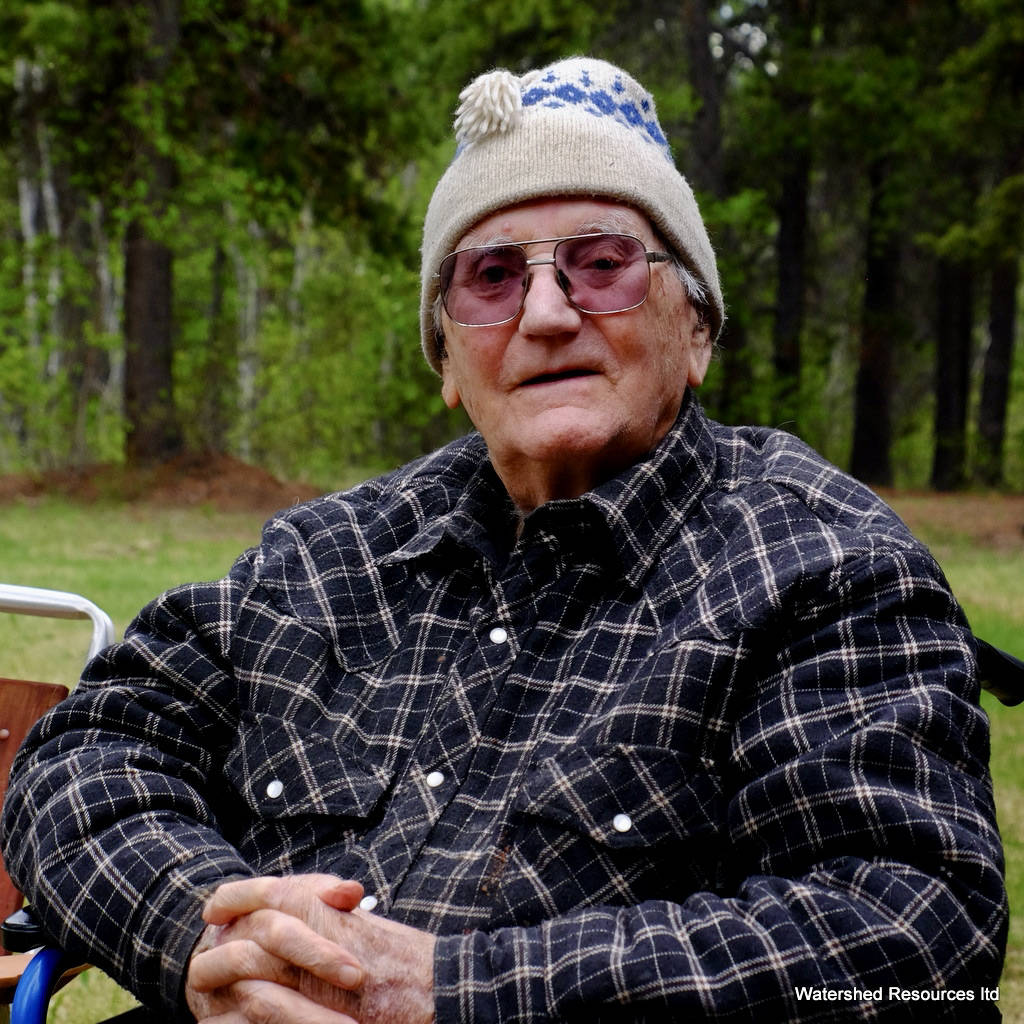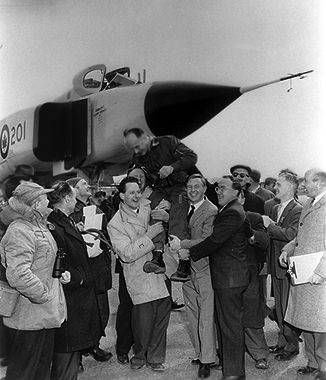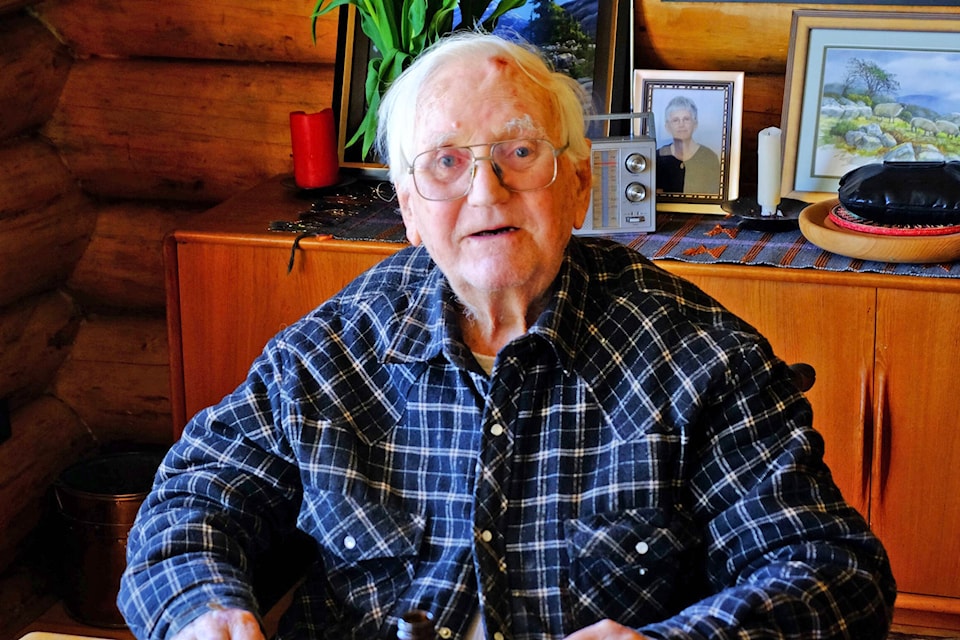G.W. “Win” Hobson of Telkwa, was recruited from the University of British Columbia to an upstart aviation company called A.V.Roe Canada (Avro) in 1948.
With his recently acquired mechanical engineering degree in hand, he was off to Toronto to join the Orenda Engines Division of Avro as a aeronautical test engineer.
“It was an interesting position, testing bits and pieces of the engines” Hobson said.
“We tested a lot of bearings under different load conditions and we had a lot of failures, but we learned fast.”
In the beginning we were making the engines for the CF-100 aircraft.
The Avro Canada CF-100 Canuck (affectionately known as the “Clunk”) is a Canadian twinjet interceptor/fighter designed and produced in Canada and has the distinction of being the only Canadian-designed fighter to enter mass production.
“It was an OK aircraft, but it was nothing compared to what was to come,” Hobson said with a grin.
“Avro was picking up military contracts in the early [19]50s and then we got the specifications for what was to become known as the Arrow.”
The Avro Canada CF-105 Arrow was a supersonic interceptor jet aircraft designed and built in the 1950s. The Arrow was one of the most advanced aircraft of its era, helping to establish Canada as a world leader in scientific research and development.
“That was quite a challenge,” Hobson said. “We knew from the specs that it was going to be and was a difficult design.
“We needed to build a faster engine for this aircraft, one capable of going over Mach 2 (twice the speed of sound) and that could pull 12G (12 times the force of gravity) and we ended up doing just that with an engine called the Iroquois.
There were many challenges to overcome, he said, noting for example that the engine was so powerful the mounts on the aircraft couldn’t hold the load, and had it been flying, the engines would have torn right out the mounts.
“Eventually we got the aerodynamics of the plane and the balance of the engines correct, and to my knowledge that is the fastest plane that ever flew, then and now.”
“It was clocked at Mach 1.8 going straight up past 58,00 feet and still going.”
“I have never watched anything quite like it.” Hobson said with pride in his voice.
Altogether five arrows were built.
During the time of the builds and testing of the Arrow there were over 25,000 people working at Avro, with another 30,000 or so working for contractors and spin off jobs. But for Win, something seemed off. There was a lot of what he called “bureaucratic bungling” going on, a change in Prime Ministers, and a President at Avro whose personal problems would eventually be his undoing.
It was at this time that his division changed Hobson’s job from actually doing design and hands-on testing, to working on the design on paper, which he found “completely boring.”
With what he felt was a “company possibly in trouble” he began to look for other opportunities.
Boeing was one which he seriously considered, but it required becoming a U.S. citizen, which after long consideration he decided he did not want to do.
He was advised his best opportunity was with the engineering firm in Vancouver called Sandoval.
He resigned his position at Avro, which in hindsight he says was the right decision, considering the government of the day cancelled the aircraft and contracts in one fell swoop, and overnight up to 60,000 people lost their jobs.
“It was a dark day, called Black Friday, with everyone losing their jobs. But the most painful part was when they completely dismantled the aircraft, took the drawings and destroyed everything related to the project.”
“I’m glad I wasn’t there to witness it.”
Hobson went on to work for Sandoval all over the world on engineering projects mostly in paper mills, solving engineering challenges at each site.
“I knew nothing about paper mills in the beginning, so again I had to learn fast, but I had some of the highlights of my career working in this industry.”
Eventually, after working all over the globe, with his family in tow, he decided another change was needed.
That brought Hobson, his wife Shirley and their four children to Kitimat, where he spent the next several years at Eurocan, the pulp mill.
“We liked the North, but we were looking for a different place to settle,” he said.
“So, when Eurocan was bought out by three partners who looked to making changes, that was when we moved to Telkwa and have been here ever since.”
Hobson changed directions, and with a bit of direction from a UBC professor and more training, became a structural engineer and started his own business building log homes.
He built four log homes in the valley and six ski cabins, and his own home along the banks of the Bulkley River, where he is now retired.
“I’ve lead an interesting life” said Hobson, now in his 90s. “I’ve seen many places, been involved in some of the most interesting projects of our times. I have been married to the most outstanding woman since 1952 and have four beautiful children. What more could a person ask for?”


